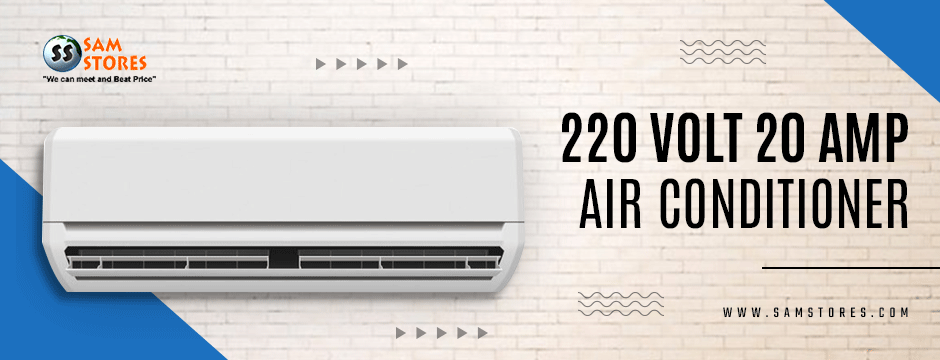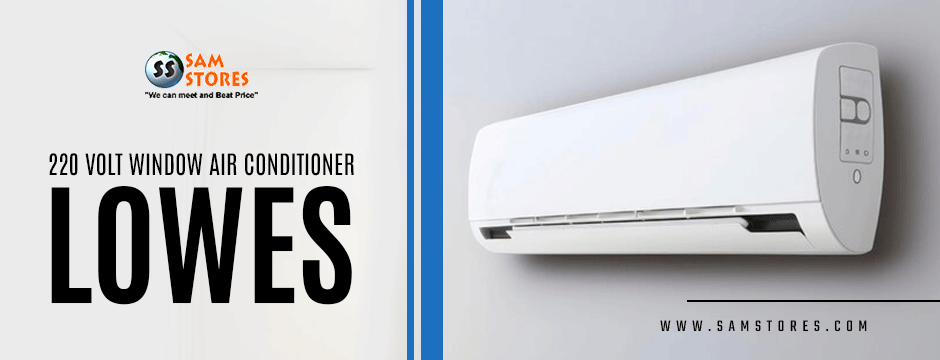Do you want to cool a large space or enhance the energy efficiency of your home?
A 220-volt 20-amp air conditioner can be an excellent choice. These units are designed to deliver robust cooling performance. For this, it has become ideal for various residential and commercial applications. However, not all air conditioners are created equal. So, finding the right one involves understanding key features. It can make a significant difference in performance, energy consumption, and user experience. Here are the top five features to look for when purchasing a 220 volt 20 amp air conditioner.
1. Cooling Capacity
Understanding BTUs
One of the most critical factors to consider when purchasing a 220-volt 20-amp air conditioner is its cooling capacity, measured in British Thermal Units (BTUs). BTUs indicate the capacity of an air conditioner to extract a specific amount of heat from a room within an hour. The higher the BTUs, the larger the area the unit can effectively cool. For instance, a unit with 12,000 BTUs is generally suitable for cooling rooms up to 550 square feet, whereas a 24,000 BTU unit can cool spaces up to 1,500 square feet.

Matching Capacity with Room Size
It’s essential to match the air conditioner’s cooling capacity with the size of the room or area you intend to cool. A unit that is too small for the space will have difficulty maintaining the set temperature. It results in increased energy usage and potential damage due to overworking. Conversely, an oversized unit may cool the space too quickly without adequately dehumidifying, resulting in a cold but clammy environment. Therefore, accurately measuring your space and consulting a BTU chart can help you select an appropriately sized unit.
2. Energy Efficiency
EER and SEER Ratings
Energy efficiency is another crucial feature to consider while buying a 220 volt 20 amp air conditioner, especially given the rising costs of electricity and growing environmental concerns. The Energy Efficiency Ratio (EER) and Seasonal Energy Efficiency Ratio (SEER) are key metrics used to evaluate an air conditioner’s efficiency. EER is calculated by dividing the cooling output (in BTUs) by the power input (in watts) under specific conditions. A higher EER indicates a more efficient unit. SEER, on the other hand, measures the efficiency over an entire cooling season and provides a broader perspective on energy consumption.
Energy Star Certification
Look for air conditioners that have earned the Energy Star certification, a symbol of superior energy efficiency recognized by the U.S. Environmental Protection Agency. Air conditioners with Energy Star certification generally consume about 10% less energy compared to standard units, which can translate to considerable savings on energy bills over the long term. Additionally, many utilities offer rebates for purchasing Energy Star-certified appliances, further reducing your overall costs.
3. Programmable Thermostat and Smart Controls
Convenience and Savings
A programmable thermostat is a valuable feature that allows you to set your air conditioner to operate at specific temperatures and times throughout the day. This means you can program the unit to cool your home before you arrive and turn it off when you’re away, leading to substantial energy savings without compromising comfort.
Integration with Smart Home Systems
Many modern models of the 220 volt 20 amp air conditioner come equipped with smart controls that enable integration with smart home systems like Amazon Alexa, Google Assistant, or Apple HomeKit. This allows for remote operation via smartphone apps, voice commands, and even automation routines. For instance, you can set your air conditioner to turn on when the temperature reaches a certain threshold or integrate it with other smart devices to enhance overall home energy management.
4. Dehumidification Function
Importance of Dehumidification
Dehumidification is a crucial feature, particularly in humid climates where high moisture levels can make indoor spaces feel hotter than they are. A 220-volt 20-amp air conditioner with a dehumidification function can remove excess humidity from the air. As a benefit, your environment becomes more comfortable and less conducive to mold and mildew growth.
Measured in Pints Per Hour
The dehumidification capacity of an air conditioner is typically measured in pints of moisture removed per hour. Units with higher dehumidification capacities can better manage indoor humidity levels. It improves comfort and reduces the need for separate dehumidifiers. This feature is especially beneficial in basements, kitchens, and other areas prone to moisture build-up.
5. Noise Levels
Impact on Comfort
Noise levels are an often-overlooked feature that can significantly impact your comfort, especially if the air conditioner is installed in a bedroom, office, or other quiet space. Air conditioners generate noise during operation, measured in decibels (dB). Lower noise levels contribute to a more pleasant indoor environment and ensure that the unit does not disrupt sleep or work activities.
Quieter Operation
Modern air conditioners are designed to minimize noise through advanced fan and compressor technologies. Look for units that specify low noise levels, typically under 60 dB, which is comparable to normal conversation. Some air conditioners also offer “quiet mode” settings that reduce operational noise during the night or in sound-sensitive environments.

Additional Considerations
- Air Filters and Air Quality
A high-quality 220 volt 20 amp air conditioner can significantly improve indoor air quality by trapping dust, pollen, and other airborne particles. Some advanced models feature HEPA filters or activated carbon filters that provide even greater filtration efficiency and help remove odors and volatile organic compounds (VOCs). Regularly replacing or cleaning air filters is crucial for maintaining the air conditioner’s efficiency and ensuring clean indoor air.
- Installation and Maintenance
Consider the ease of installation and maintenance when selecting a 220 volt 20 amp air conditioner. While some models are designed for straightforward installation, others may require professional assistance, particularly if modifications to electrical wiring or structural changes are needed. Opt for units with accessible components and easy-to-clean features to simplify routine maintenance and prolong the unit’s lifespan.
- Warranty and Support
A good warranty can provide peace of mind and protect your investment. Check the warranty terms offered by the manufacturer, including coverage for parts, labor, and compressor. For instance, when looking for a 220 volt window air conditioner at Lowes, you can often find models that offer comprehensive warranties and customer support services to ensure long-term satisfaction and reliable performance. Additionally, ensure that customer support is readily available to assist with any issues or questions that may arise.
Summary
Selecting the right 220 volt 20 amp air conditioner involves careful consideration of various features that affect performance, efficiency, and user experience. By focusing on cooling capacity, energy efficiency, programmable thermostats, dehumidification functions, and noise levels, you can find an air conditioner that meets your specific needs and enhances the comfort of your living or working space. Investing in a high-quality, feature-rich unit not only ensures optimal cooling but also contributes to long-term savings and a healthier indoor environment. So, if you want to buy this air conditioner from a reliable store, you can order it from Sam Stores.
